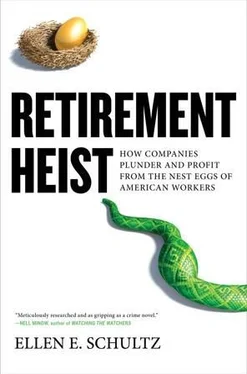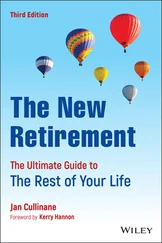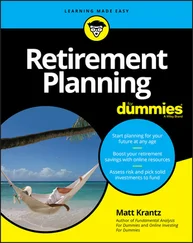Unisys retirees sued, pointing to the written promises, but the court rejected their claim. “Just as in war, there are no winners,” wrote a U.S. district court judge in Philadelphia in a 1996 decision. “This is a corporation that provided a generous benefit and may have continued providing it if medical costs had not escalated and FAS 106 had not become a reality.”
For all their talk of skyrocketing costs and burdensome accounting regulations, these companies weren’t facing as much peril as the public assumed. Generally, the benefits cover only people who retire between fifty-five and sixty-five, assuming the person had worked long enough to be eligible—usually a minimum of fifteen years. Employers had largely closed that barn door long ago, shutting out people hired after a certain date, so the population of employees eligible for benefits had largely stopped growing. Another factor that limits employers’ liabilities: When the retiree turns sixty-five, employer coverage, if it continues, becomes secondary to Medicare, which provides basic hospital and doctor-visit coverage. That means the employers’ costs drop sharply. As unlikely as it sounds, the older retirees get, the less expensive they become to their former employers.
Nor did employers face much exposure to rising costs. That’s because when they adopted FAS 106, most companies, including Sears, R.R. Donnelly, Delta Air Lines, and Caterpillar established ceilings on how much they would spend for retiree health care, regardless of how high they rose in the future. What this means is that, once these companies hit their pre-set spending ceilings, say, at $20 million a year, or at an annual limit for an individual, they’re protected from rising health care costs, no matter how sick their retirees get or how long they live.
In 1993 IBM set ceilings on its future spending. For retirees under sixty-five, the cap was $7,000 or $7,500 depending on when they retired. For those on Medicare, the cap was $3,000 or $3,500. The ceilings effectively shifted the risk of rising health care costs to the retirees, because once the costs increased enough to hit the company’s pre-set ceiling, any costs over the cap are passed on to the retirees. When IBM hit its spending ceiling around 2002, its spending stopped growing. All the increased costs were passed on to the retirees, whose health care premiums rose 67 percent, while IBM’s spending declined 18 percent. With spending caps in place, companies see a steady decrease in costs as their aging retirees become eligible for Medicare, drop the coverage, or die.
By the late 1990s, about two-thirds of retirees were dropping their employer-provided coverage within several years after retiring, according to Labor Department figures. Among them was Elaine Russell, a Sears retiree in Seattle, who dropped the coverage when it had reached one-third of her pension. Medicare didn’t cover medications for her thyroid condition and colitis, so she paid for her prescriptions with her grocery budget and relied on the $2.50 lunches at the senior center and on the local food bank, where she got free canned food for herself and her cat.
Though the retirees’ share of costs was rising, Sears’s was shrinking, not just because of the cost shifting, but because it changed its estimate about health care inflation. By 1999, the retailer had slashed the health care trend rate to 6 percent from 14 percent. Revising that assumption downward, of course, lowered the obligation on the books. So did the benefits cuts. By the end of the decade, Sears’s IOUs for retiree health care had fallen 69 percent, to $900 million.
When retirees like Russell drop coverage they can no longer afford, companies benefit in two ways. One is that they no longer have to pay their share of the benefits. That’s a cash savings. The other is that because the company will no longer have to pay anything for the retiree dropouts, for the rest of their lives, the company can total up the overall lifetime savings and reduce its obligation by that amount. That produces gains that boost income.
By 2005, when Sears merged with Kmart, the number of retirees in the Sears plan had fallen from 100,000 to 50,500. Sears doesn’t disclose how many had died and how many had dropped out. Liz Rossman, Sears’s vice president for benefits, dismissed the notion that retirees were dropping out because they couldn’t afford the benefits. Apart from those who had died, others might have gotten jobs with health coverage. “We were trying to strike a balance between duty to shareholders, so they could get an adequate return on investments, with our duty to retirees.” And the Sears plan was “far more generous with benefits than others in our industry.” She pointed out that the company had boosted other retiree benefits, such as doubling the discount retirees receive on clothing purchases at the store, from 10 percent to 20 percent.
In 2006, Sears stopped paying retiree medical costs altogether.
These ceilings not only protect companies from rising health care costs but also provide them with a perverse incentive: A company that has hit its spending cap has little incentive to negotiate the lowest possible prices with medical providers. In fact, it has an incentive not to: Rising expenses not only won’t hurt the company but will tend to drive more retirees from the program.
Meanwhile, retirees with preexisting conditions and serious health problems remain in the health plan, driving up costs further. Robert Eggleston, an IBM retiree in Lake Dallas, Texas, had brain cancer, so even when his monthly costs for retiree coverage exceeded his pension, he remained in the plan, which also covered his wife, LaRue. To get by, he cashed out his 401(k) account and took out a second mortgage on his home. Luckily, he was eligible for free supplies of a tumor-fighting drug through a program for low-income families, but this was an unexpected end for a career IBM employee.
Some employers hastened the death spiral by segregating retirees into their own risk group rather than keeping active employees and retirees in the same “risk pool” and spreading costs among a wider group of people, as had been common practice in the past. When retirees are segregated into their own pool, the per capita costs rise, because an older, sicker population needs more medical care.
After Xerox split its active and retired employees into two pools in 2003, its retirees under sixty-five began paying 50 to 60 percent more than employees their age. Eugene Nathenson, a retired controller of Xerox Financial Services, saw his premiums shoot up from $1,645 in 2003 to $3,196 the following year, while the deductibles he and his wife paid pushed their out-of-pocket costs beyond $6,000 a year. [10] This explains why COBRA costs can be so high: Employers can segregate former employees—regardless of their age—into the retirees’ risk pool.
REPLENISHING THE COOKIE JAR
By the late 1990s and early 2000s, many companies had used up the actuarial gains they’d stockpiled after the early rounds of cost shifting and benefits cuts, just as they had spent the surplus in their pension piggy banks. So they turned to a tried-and-true solution: Cut more benefits.
Companies continued to cut retiree health benefits throughout the 2000s. International Paper cut benefits in 2000, 2001, and 2002, telling retirees that health care costs were spiraling. What had actually happened was that it had used up the pool of accounting gains generated after the company recorded a huge liability in 1991, and then set a cap on benefits. Unlike McDonnell Douglas, which took all the gains at once, International Paper trickled the gains into income in subsequent years, to the tune of $17 million a year. After this stockpile was used up, cutting the benefits generated a fresh pool of accounting gains that added a total of $65 million to its income by 2004. In 2004, the company then closed the plan to salaried employees whose age plus years of employment with the company totaled less than sixty as of January 1, 2004. Another cut in 2009 whittled another $40 million in obligations.
Читать дальше












